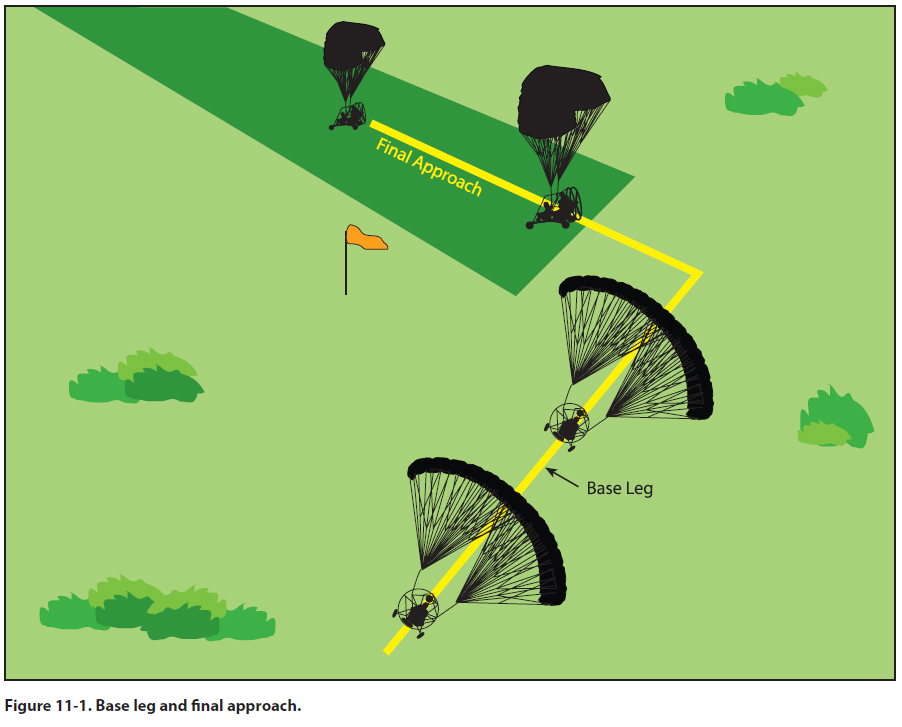
The information in this chapter is specific to the powered
parachute land class. Refer to the Seaplane, Skiplane,
and Float/Ski Equipped Helicopter Operations
Handbook (FAA-8083-23) for information regarding
operation of a powered parachute category sea class
(PPCS) aircraft, as appropriate.
Normal Approach and Landing
A normal approach and landing involves the use of
procedures for what is considered a normal situation;
that is, when engine power is available, the wind is
light or the final approach is made directly into the
wind, the final approach path has no obstacles, and the
landing surface is firm, level and of ample length to
gradually bring the powered parachute to a stop. The
selected landing point should be beyond the runway’s
approach threshold but within the first one-third portion
of the landing area.
So you may better understand the factors that will
influence judgment and procedures, the last part of
the approach pattern and the actual landing will be
divided into five phases: the base leg, the final approach,
the roundout, the touchdown, and the afterlanding
roll.
The manufacturer’s recommended procedures, including
powered parachute configuration, center of
gravity, and other information relevant to approaches
and landings in a specific make and model powered
parachute are contained in the Pilot’s Operating
Handbook (POH) for that powered parachute. If any
of the information in this chapter differs from the
powered parachute manufacturer’s recommendations
as contained in the POH, the powered parachute manufacturer’s
recommendations take precedence.
Base Leg
The placement of the base leg is one of the more important
judgments made by the pilot in any landing
approach. [Figure 11-1] You must accurately judge
the altitude and distance from which a gradual descent will result in landing at the desired spot. The distance
will depend on the altitude of the base leg and the
effect of wind. When there is a strong wind on final
approach, the base leg must be positioned closer to the
approach end of the runway than would be required
with a light wind. You should strive to fly a constant
ground track on base leg.

Drift correction should be established and maintained
to follow a ground track perpendicular to the extension
of the centerline of the runway on which the
landing is to be made. Since the final approach and
landing will normally be made into the wind, there
may be somewhat of a crosswind during the base leg.
This requires the powered parachute be angled sufficiently
into the wind to prevent drifting farther away
from the intended landing spot.
The base leg should be continued to the point where
a medium to shallow-banked turn will align the powered
parachute’s path directly with the centerline of
the landing runway. This descending turn should be
completed at a safe altitude that will be dependent
upon the height of the terrain and any obstructions
along the ground track. The turn to the final approach
should also be sufficiently above the airport elevation
to permit a final approach long enough for you to accurately
estimate the resultant point of touchdown.
This will require careful planning as to the starting
point and the radius of the turn. Normally, it is recommended
that the angle of bank not exceed a medium
bank because the steeper the angle of bank, the faster
the powered parachute descends. Since the base-tofinal
turn is often made at a relatively low altitude, it
is important not to do radical turns at low altitude. If
a significant bank is needed to prevent overshooting
the proper final approach path, it is advisable to discontinue
the approach, go around, and start the turn
earlier on the next approach rather than risk a hazardous
situation.
|

